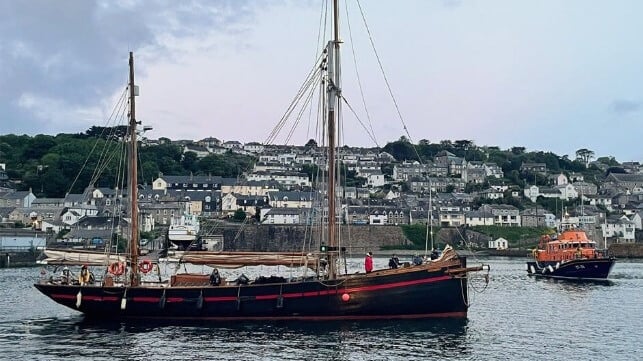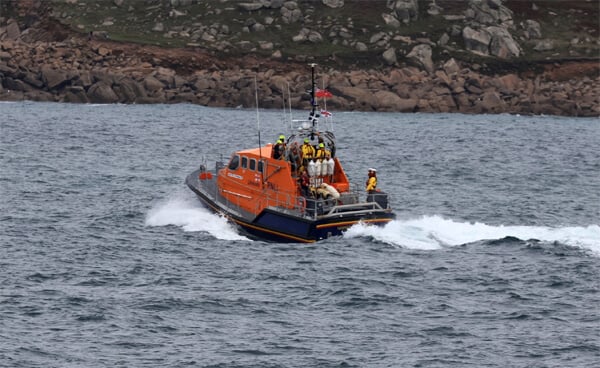Three Crews from the UK’s RNLI Coordinate to Save Historic Sailing Vessel

The UK’s volunteer Royal National Lifeboat Institution (RNLI) is being commended for its operation earlier in the week to assist a historic sailing vessel that was taking on water and requested urgent assistance. It became a 10-hour operation involving three of the RNLI crews to see the historic ship safely to port so that it could be repaired to continue its service as a charity training vessel.
The Falmouth Coastguards received the call for assistance on Wednesday, May 22, in the evening from the Leader which operates for the Atlantic Youth Trust. Built in 1892, the vessel is the largest and possibly oldest surviving example of a unique vessel, the Brixham trawler. Once a common design of a wooden hull fishing vessel, there were over 400 of the trawlers in Brixham, but today it is believed that just five remain.
Leader, according to Sail Training International, is rigged as she would have been when first built, as a gaff ketch. She is 80 feet (24 meters) long on deck, and 105 feet (32 meters) overall. She displaces about 110 tonnes in sailing trim. Leader operates today with a crew of seven or eight and can accommodate 12 trainees.
After operating for 15 years as a wooden sailing ship, the Leader went to Scandinavia in 1907 where she continued to be used as a fishing boat. By the 1940s and 1950s, she was hauling cargo after having been fitted with a motor. She took on her role as a training ship in the 1960s, and was later restored and finally came back to the UK in 1985 and historic home of Brixham in 1999.

City of London III from Sennen Cove was one of three lifeboat teams to assist to save the historic trawler (Sennen Cove RNLI)
The Falmouth Coastguard sent the RNLI Padstow with its vessel Spirit of Padstow to respond to the Leader which was about 11 miles west of Trevose Head in southwest England at Cornwall. The sailing vessel with a crew of eight aboard reported it was taking on water and attempting to make port for repairs. The first lifeboat reached her at around 19:30 and two crewmembers transferred to the trawler to provide assistance. They were able to get the pumps working on the vessel to stabilize the situation.
With the water ingress under control, the crew of the Leader wanted to attempt to reach Penzance where repairs could be made to their historic vessel. The vessel was able to proceed under its own power, but the decision was made that it would need an escort because of the danger. In their favor, the weather was good with a northerly 2 to 3-knot wind and slight to moderate seas.
The Spirit of Padstow stayed with the sailing vessel until shortly after 22:00 when the City of London III from Sennen Cove Lifeboat took over. The lifeboat had a crew of seven aboard, and after assessing the situation it was determined that they did not need to board the Leader.
At 12:35 the Penlee Lifeboat station took over the escort duty with its vessel Ivan Ellen. They stayed with the Leader until they were able to reach Newlyn Harbour in Penzance at 05:40. The escort had successfully brought the historic vessel around Lands End to the final destination safely. Repairs will be affected on the vessel so that she can return to her training role.
“The prompt response to the pagers, and the friendly and professional manner in which the crew dealt with the situation was very much appreciated,” said Peter Scallan of the Atlantic Youth Trust. “In particular, we would like to thank the two crewmembers who boarded Leader to assist with the pumping represented the best of the RNLI and were very supportive of the skipper, mate, and crew of Leader.”
